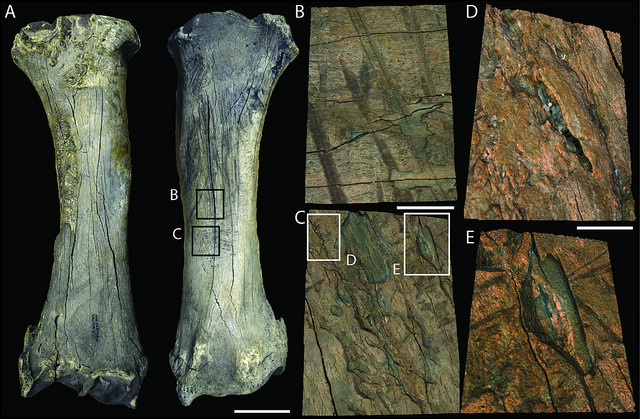
Pre-Neanderthalers could handle complex techniques
An international team of researchers including Leiden archaeologists has produced convincing evidence that 300,000 years ago pre-Neanderthal people had a high level of cognitive complexity. New insights into early human capabilities and behaviour.
A detailed study of the thousands of finds recorded from the Lower Palaeolithic deposits at Schöningen has now been completed. It presents the palaeogeographical and palaeoecological setting of hominin’s occupation of the area, as well as new information on late Lower Palaeolithic hominin behavior. The results of this archaeological, zoological, botanical and geological research are compiled in a special issue of the Journal of Human Evolution.

Unique
In the 1990s excavators found the first Palaeolithic artefacts in Schöningen among them several well-elaborated, carefully carved wooden spears with an age of ca 300,000 years amongst the butchered remains of numerous horses and other large herbivores. These remarkable discoveries - the oldest completely preserved hunting weapons - changed our view on early human capabilities and behaviour. The large number of finds, excavated during the past 20 years, combined with the exceptional preservation of organic material (both botanical as well as faunal remains) is unique and makes Schöningen one of the most important Palaeolithic localities in the world.
Scientifically, one of the most remarkable results is the discovery of more than 100 tools made from horse, red deer, giant deer and bison bones. The long scraping marks on the bones and the embedded flint particles indicate that hominins used complete, fresh as well as “old” weathered bones. They cleaned the surface of the bones before using them to sharpen flint cutting and scraping tools, which were used to butcher the carcasses of large herbivores. After being used to work flint, most of the bone tools were fractured to get access to the nutrient-rich bone marrow. A number of bones have also been used as hammers to break the marrow bones.
Sabre-toothed cat

Another remarkable find is the weathered limb bone from a sabre-toothed cat that was picked up from the surface by these Schöningen hominin (
Homo heidelbergensis), cleaned and used to sharpen stone tools. During the percussion process the bone broke. After being used the bone was discarded and finally gnawed by wolves.
The multifunctional use of bones is considered by archaeologists as a form of opportunism. It also indicates that the Schöningen hominins used not only wooden spears but also bone tools for multiple tasks. The unique assemblage suggests that at least 300,000 years ago, European hominins had an advanced knowledge of organic technologies, a compelling signal of a high degree of cognitive complexity. This extensive use of bone tools was previously only known from 30,000 - 40,000 years ago.
For the next 12 months there is the possibility to download this special issue of Journal of Human Evolution on Schöningen.
